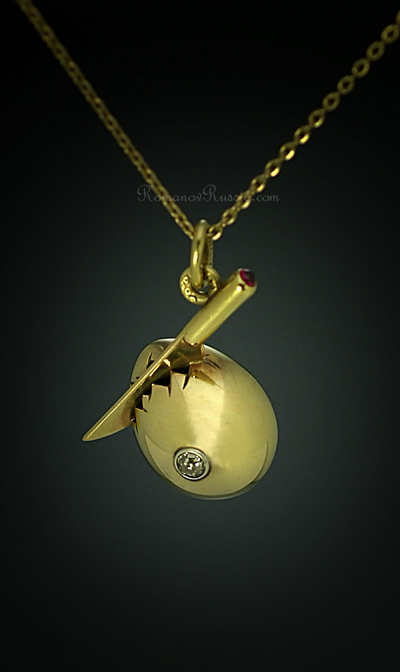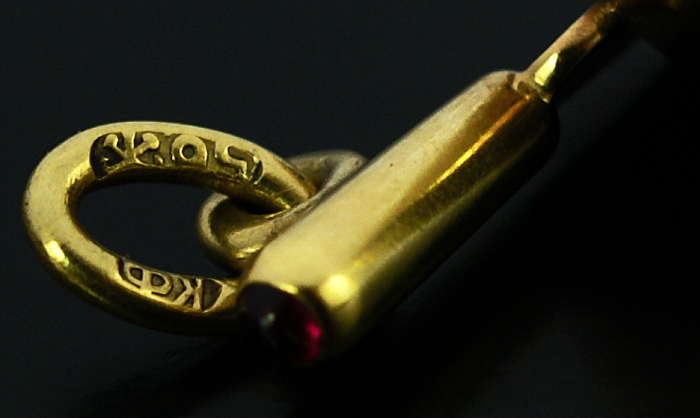Antique Russian FABERGE pendant in the form of a gold egg being cracked with a knife, made in St. Petersburg around 1890.
The polished gold egg is set with a diamond, the knife – with a tiny cabochon spinel.
Height of the egg (without knife and rings) – 1,8 cm (3/4 in.). Length of the knife – 2,4 cm (1 in.)
An identical egg from the Forbes magazine collection is published in FABERGE The Forbes Collection, page 79
Both rings are struck with 56 zolotniks standard (14K-583 gold), St. Petersburg assay mark, and ‘ KФ ‘ in Cyrillic for Karl Faberge.
This Faberge egg is sold.
Faberge firm existed until 1918, it was shut down during the revolution, when the House of Faberge was nationalized by the Bolsheviks and the stock was confiscated.
Peter Carl Faberge died in 1920 in Switzerland. The Faberge brand was resold several times during the 20th century. Only eggs made in Russia before 1918, can be considered original Faberge eggs.
Although produced in relatively large numbers in the late 19th and early 20th century, miniature Faberge eggs are hard to find today. Probably, only a dozen or so, original Faberge egg pendants appear on the world market each year. Unlike big Faberge eggs which are worth millions and rarely seen for sale, these small Faberge egg pendants represent an affordable opportunity to own an egg made by the most renowned Russian Imperial jeweler.


